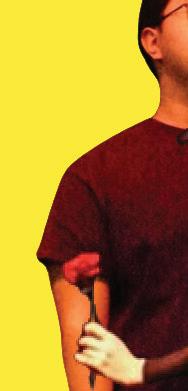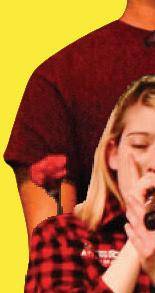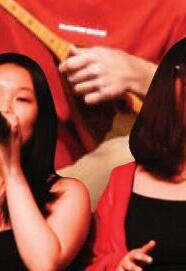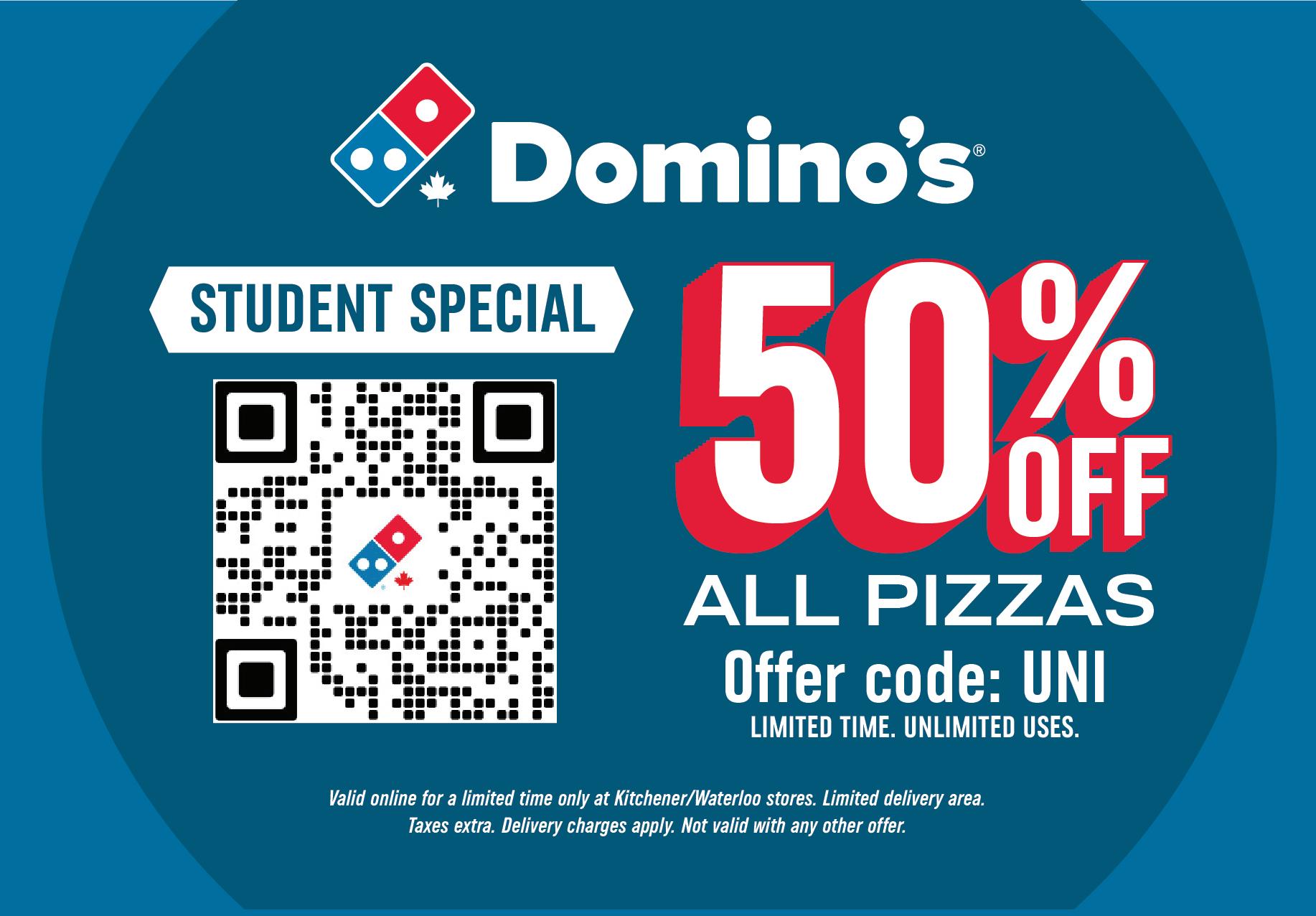









Behind the scenes of the Aphrodite Project P3 Will blockchain solve low student engagement? P8



Are physical textbooks gone for good? P14












Behind the scenes of the Aphrodite Project P3 Will blockchain solve low student engagement? P8



Are physical textbooks gone for good? P14




03 Find love at UW, the UW way by Veronica Reiner
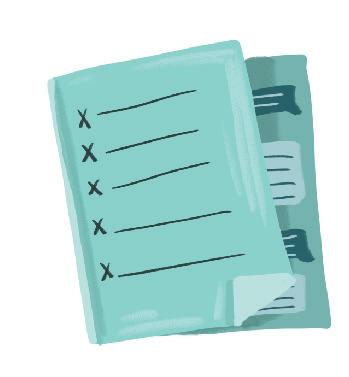
21 Everything you need to know about tenant rights by Sophia Bowman
Is blockchain the solution to low student engagement on campus? 08 by Charlie Dickson
12
How to balance work with love by Andie Kaiser
What happened to the “book” in “text- book?” 14 by Alicia Wang

2024 Oscars: Imprint’s early predictions by Abhiraj Lamba & Andie Kaiser
by Ingrid Au
Has UW changed from a traditional campus-based university to a commuter school? by Indpreet Singh 17 Is Conestoga College’s massive growth impacting UW students? by Farhan Saeed

Imprint is the official student magazine of the University of Waterloo. It is an editorially independent magazine published by the Federation of Students, University of Waterloo, carrying on business as the Waterloo Undergraduate Student Association (“WUSA”), a corporation without share capital. Imprint is a member of the Ontario Community Newspaper Association (OCNA). Content is provided for general information, education and entertainment purposes only, and does not necessarily reflect the views of the Editorial Committee, WUSA, staff or advertisers. We welcome editorial submissions, articles, letters, photos and graphics (submissions) for publication in any edition of Imprint subject to terms and conditions for submissions, which are available upon request. Imprint does not guarantee that submissions will be published. Imprint reserves the right to approve and edit any submissions to be published. A submission will not be published if it is determined to be libelous or in contravention of Imprint’s policies, code of ethics and journalistic standards. Imprint may reproduce content, including submissions, for commercial purposes in any format or medium. Imprint disclaims direct and indirect liability for reliance on or use of its content. Imprint is published monthly as a magazine and regularly online. Imprint reserves the right to screen, edit and refuse advertising. One copy per customer. Imprint [SSN 0706-7380] Imprint CDN Pub Mail Product Sales Agreement no. 40065422. Pub Mail Product Sales Agreement no. 40065422.
Imprint acknowledges that the University of Waterloo is situated on the traditional territories of the Attawandaron (Neutral), Anishnaabeg, and Haude-nosaunee Peoples. The University of Waterloo is situated on the Haldimand Tract, land promised to Six Nations, which includes six miles on each side of the Grand River. Therefore, Imprint
“We’re not trying to do what other dating apps do and make you pay for better matches, keep you addicted to swiping — because we want to match people well.”

Aiden Low, Co-Creator of Aphrodite Project











Find love at UW, the UW way









Now in its fifth run at UW, the Aphrodite Project aims to give students their perfect match

Veronica Reiner, Executive Editor personality traits, attachment styles, and future goals. After the algorithm runs, users receive their ideal match on Feb. 13, just before Valentine’s Day.
Tired of endless swiping on dating apps like Tinder, Bumble, and Hinge? Enter the Aphrodite Project, a student-run initiative that aims to create a tailored approach to online dating through a matchmaking algorithm. Applications for the 2024 UW edition opened up on Jan. 23. Those interested sign up with their school email and fi ll out a 20-minute questionnaire, which asks about deal breakers, lifestyle preferences,

Low and Denise Yeo, both in their third year at the time of its creation and on exchange from the National University of Singapore. Low was an exchange student at UW, while Yeo was on exchange at the University of Toronto (UofT). After a successful trial run in Singapore, they brought the project to UW and UofT in 2020.





Low said that the inspiration for the Aphrodite Project came from hearing friends complain about dating apps, as well as wanting to provide a safe space for the LGBTQ+ community. “I wanted to create a space where you can come as you are, and just meet someone who will accept you fully for who you are,” Low said.
He added that the format of the Aphrodite Project — one personalized match — allows for a comparatively kinder dating app experience. “People do put a lot more humanity into approaching their match,” Low said. “We’ve seen people in the follow-up surveys mention that it was a really nice online dating experience, because at least people understand that it’s a safe community, and you’re matching with someone in the community.”
matches — both in different programs from her — and got along “very well” with both. For the romantic pool, she went on a couple of dates with her match, but found they were more compatible as friends.
fourth year of undergrad (1,040), third (1,015) or second (709). The most common major among participants was computer science (753), electrical and computer engineering (330) and mathematics (252).

“You can really build some good connections with it. The only trouble that I had was that I sometimes found that matches, instead of being complementary, were very similar to who you are,” Fatt






There were almost twice as many cisgender men (2,406) than cisgender women (1,258) who participated last year at UW. Other participants identified as non-binary (27), a transgender man (8) or a transgender woman (6). A large majority identified erosexual (3,254), while others identified homosexual (104), pansexual (49), questioning (40) asexual

“A fun way to meet new people, especially if you’re somebody that doesn’t go out that often, or if you’re a little more shy, or if you’re looking to add to your social group.”

Jennifer Fatt is a UW student in the fi rst year of her master’s degree, who tried both the romantic and platonic pools for the Aphrodite Project in 2020 and 2021. She said the Aphrodite Project can be for every student, particularly because a platonic option is available.
“It’s just a fun way to meet new people, especially if you’re somebody that doesn’t go out that often, or if you’re a little more shy, or if you’re looking to add to your social group,” Fatt said. She added that a bonus is that matches are in the same life stage and on the same campus.
Fatt also found the Aphrodite Project survey format a great way to reflect on who you are. She met up with two of her















Jennifer Fatt, First-year master’s student at the University of Waterloo
said. “I fi nd that sometimes compatibility [is easier] when you have some differences, and you can balance each other out.”
The friendships she made were difficult to maintain due to the COVID-19 pandemic. Fatt has not used the project in recent years as she’s now in a relationship with a UW engineering student, who she met in the fi rst year of her undergraduate degree.
In the 2023 run, there were 4,059 UW students and alumni who signed up for the project and 3,715 who completed the questionnaire. The majority were in their
as hetas bisexual (218), (31) or demisexual (19).
More than 10,000 people participated across all universities that year. Maya Bozzo-Rey, marketing and communications team lead for the Aphrodite Project, said that more than 3,000 people across all schools had signed up in 2024 as of Jan. 24. “I wasn’t expecting that many people on the fi rst day,” she said.








In addition to UW and UofT, the Aphrodite Project is available to students and alumni at McMaster University, the University of Western Ontario, Harvard University, Carnegie Mellon University, Massachusetts Institute of Technology (MIT), the University of British Columbia, the University of California, Los Angeles, and the University of Hong Kong. Participants are only matched with others from their university or college, with the exception of MIT and Harvard.

Schools can be included in the project by request. “We have forms available for people to request their university, and if we see the university come up enough, we start marketing to that university specifically,” Bozzo-Rey explained.
More than 80,000 matches have been made through the Aphrodite Project since 2019. There are currently two matching pools — romantic, for those looking for a romantic connection, and platonic, for anyone seeking friendship. The ratio tends to gear towards the former, with about 90 per cent of participants opting for the romantic pool. Currently, participants can only sign up for one pool.


New features for 2024 include in-
creased safety measures and resources.
“It’s been extremely important to make sure that we keep everyone safe, because we have 10,000 people signing up for this [every year], and we’re bringing them together,” Bozzo-Rey said. “We do feel a responsibility to make sure everything is as transparent and safe as possible.”
The National University of Singapore, through their Innovation and Entrepreneurship Practicum Award, granted Low and Yeo about $10,000 to start the project. To this day, however, the project runs on donations — expenses include website hosting fees, creative software, servers, and email service. Low said he has paid for some of the expenses out of pocket.

“We truly do it out of passion,” Low said. “We’re not trying to do what other dating apps do and make you pay for better matches, keep you addicted to swiping — because we want to match people well.”
“Everyone on the team is volunteering their time and their efforts, alongside working full-time or studying full-time,” Bozzo-Rey added. “So it really is a group of really passionate people that want to keep it running.”
More than 20 people are dedicated to the success of the Aphrodite Project in a variety of roles, including engineering, UX design, research, and marketing.


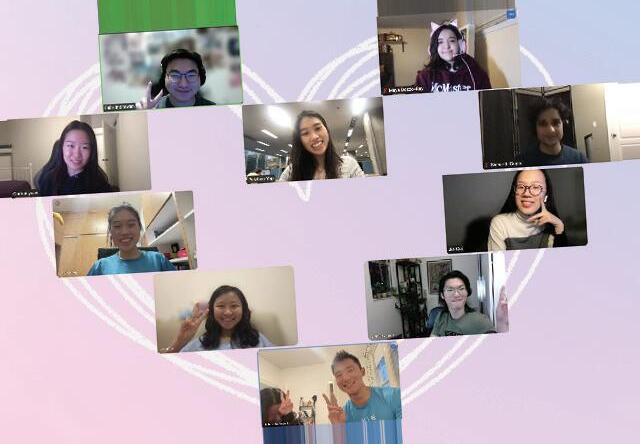


Low said that those who work with the Aphrodite Project have used that experience to develop their careers — for example, volunteers in the engineering department have landed internships and jobs by listing their work with the project. “It’s really nice to see people grow along the way,” he said.
Moving forward, Low plans to continue to grow the Aphrodite Project and optimize each participant’s experience. To that end, participants are encouraged to complete the follow-up survey to help with future years.















“Everyone on the team is volunteering their time and their efforts, alongside working full-time or studying full-time.”






Maya Bozzo-Rey, Marketing and Communications Team Lead for the Aphrodite Project



Sophia Bowman, Contributor
With March just around the corner, students are once again on the hunt for housing. With that in mind, here are a few key things students should be aware of when renting, as outlined by WUSA’s tenant rights meetings. These meetings were done in collaboration with Waterloo Region Community Legal Services (WRCLS) to inform students of their rights under the Residential Tenancies Act (RTA).
The most common tenant concerns relate to maintenance, such as household appliance malfunctions, plumbing issues, and electrical concerns. Common issues surrounding maintenance include negligence, unaddressed maintenance requests, and emergency maintenance requests. The suggested solution is to keep a record of any conversations with the landlord about maintenance problems in writing, as well as to present the landlord with a reasonable date to have the issues fixed by.
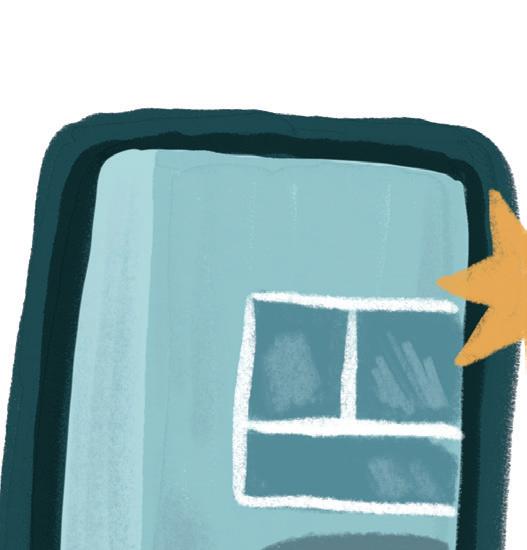
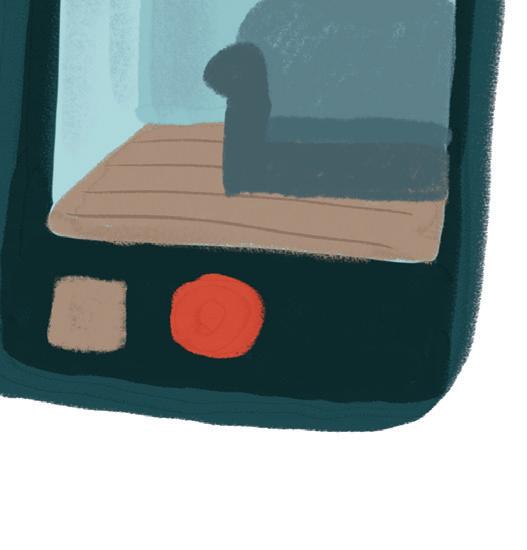

To avoid property damage allegations, ensure there is photographic proof of the state of the property before moving in and after moving out.
As of Sept. 1, 2021, the RTA stipulates that landlords can pursue former tenants for damages or unpaid rent up to one year after the date the tenant moved out. This update has
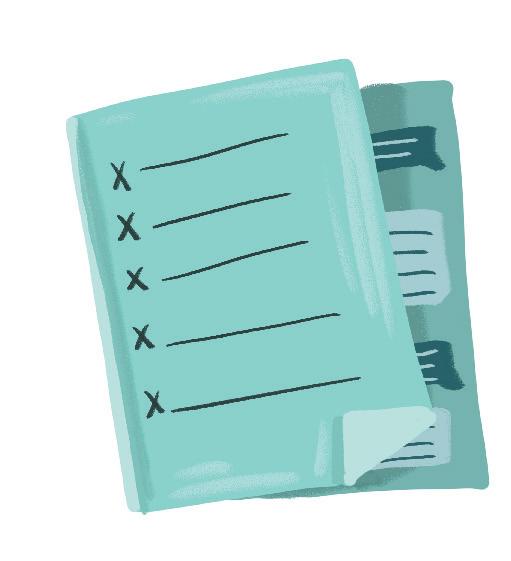
Should the concerns not be addressed, the tenant can take them up in front of the Landlord and Tenant Board (LTB); therefore, it is important that there is physical evidence of the landlord’s failure to uphold a reasonable timeline.
created a common issue of illegal charges to tenants after moving out for things considered regular wear and tear. Photographic evidence helps to establish proof that the damages are not a result of any direct action by the tenant. Particularly important areas to photograph include walls, windows, door casings, moulding, and floors. It is also vital to keep physical records of all rental payments to avoid rental charges at a later date.
According to WRCLS member Pataida Mzite, the RTA exists to “protec[t] the relationship that exists between a landlord and a tenant.” Knowing these terms protects tenants from exploitation.
One such important term states that rent increases can only occur once every 12 months. As well, tenants must be given 90 days’ notice prior to the increase. Other essential terms relate to subletting. For example, if the tenant remains in the building, then the situation is not considered subletting, and the other tenant is considered under the RTA as a roommate or other occupant of the unit. Additionally, tenants must obtain consent from the landlord to sublet, but landlords cannot artibrarily withhold this consent. In such cases, the tenant has the right to appeal to the LTB for consent.
The RTA also sets out important terms for eviction,
WUSA has resources available for those seeking legal assistance, such as the Student Legal Protection Program, which provides legal advice not just for tenants but also on issues such as academic rights, co-op, and employment. This program can be accessed by all full and part-time undergraduate students of UW and covers the legal expenses associated with housing issues, such as disputed or illegal rent increases.
WUSA also provides a guide to finding off-campus housing, including an interactive map of the area and surrounding housing. The organization is currently in the process of developing a “dedicated housing and tenancy resource that will be shared on [their] website and social media channels when it is ready,” according to WUSA’s media and communications specialist Hannah Wardell. This resource will contain information on “navigating housing concerns, what to look for when signing a lease and [provide] resources for support.”
such as the necessity of a notice preceding an eviction hearing with the LTB. Additionally, if a lease agreement includes a clause that is not outlined by the RTA, that section of the agreement is void and can be brought up to the landlord or, if necessary, the LTB. Common examples of such clauses in leases include deductions for regular maintenance, or an outright ban on pets (though landlords can enforce this rule when reviewing rental applications or if the building’s corporation has passed bylaws banning pets).

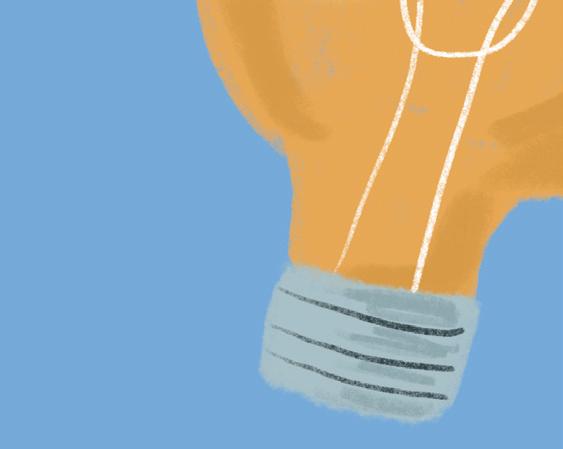



Another resource readily available to students is WRCLS. The walk-in legal clinic provides free legal services such as legal information, support, advice, and representation.
Though finding housing is often a stressful and difficult endeavour, a plethora of resources are available to Waterloo students looking for a little help navigating the legal landscape of renting. Full-time or part-time undergraduate students in need of legal assistance can contact WUSA’s Student Legal Protection Program open 9 a.m. - 5 p.m. Monday to Friday.
Charlie Dickson, Contributor
TheUniversity of Waterloo is home to a variety of ambitious student organizations that aim to innovate campus life and administration. Among them is UW Blockchain, a club that works with and develops blockchain ecosystems (such as Web3), hosts events to help foster startups, and connects members with potential employers. Over the last several months, the club has been developing a blockchain system that they say, if fully adopted, could radically alter campus culture, transactions, and student government. They call it “GooseDAO.”


eral key functions of their blockchain, including decentralization of the voting process, greater transparency, improved ability to create and push new proposals and referendums, and increased financial and operational mobility to clubs.
The GooseDAO blockchain will host two separate tokens: the ‘Goobi,’ a non-exchangeable governance token that members use to vote, and the ‘HONK,’ a community token that is transactional and can be exchanged for value. In an interview with Imprint, Van der Meer said that the lack of engagement towards WUSA among its membership was one inspiration for the creation of GooseDAO.

A Decentralized Autonomous Organization is a type of bottom-up entity structure with no central authority.
A blockchain is an immutable, secure database that records information (such as transactions) on a peer-to-peer network. GooseDAO is the name of one such network that is being spearheaded by two prominent members of UW Blockchain — Amy Qin, a chemical engineering student, and Evan Van der Meer, who is studying biology and Indigenous entrepreneurship. Their goal is to launch it on UW campus this term.
In September 2023, Qin presented the idea of GooseDAO at a conference hosted by the Solana Foundation, where she described the vision and goals of the project. The presentation, titled “Decentralize Campus: University Students Run on Blockchain Rails,” focused on the premise that problems in student government could be more effectively solved using blockchain technology, and that currently these organizations are too centralized and not sufficiently representative of the student body. On the GooseDAO website, they list sev-
“The problems we were noticing was that voter turnout was not happening. Students aren’t voting in elections,” he said, referencing the 3.28 per cent of undergraduate students who cast their vote in last year’s elections.
He further explained that the popularization of GooseDAO would incentivize members to consistently engage with campus activities, events, and decision making. Within this “gamified” system, students who are more involved on campus would receive more HONK tokens, thereby giving them more of a “voice.”
Fahim Ahmed, current president of UW Blockchain, told Imprint that WUSA’s recent financial decisions also showcase the need for decentralized government.
“One of the main controversies a couple months ago was when people were wondering why money was being spent on a trip to Niagara for training,” he said. “Essentially, what blockchain could be useful for is tracking WUSA spending more transparently because you can see all of it publicly.”
Both Van Der Meer and Ahmed argued that decentralizing decision making in regard to student issues would signifi-
cantly improve governance and student life. Qin added that “[centralization] creates a lot of stress for students who are typically in these situations. So, we wanted to come up with a solution that could lift that weight a little bit and spread it out between people in a way that’s easy to access.” Qin said that the WUSA reform movement, which began in fall 2023, was an inspiration towards the development of the GooseDAO.

priorities they focus their time on. “This is not only done through our student board that is voted on by Waterloo undergrads, but also through regular research touchpoints with our members and input from our student staff and volunteers.”

“
“ If it’s all transparent, and if everything is all public, then WUSA is kind of forced to accommodate whatever the student body wants.

Amritpal Chera, Builder at UW Blockchain
In response to questions regarding UW Blockchain’s project, WUSA told Imprint in an email that they recently underwent a transformation to improve access to meaningful and democratic participation in the organization. “Under the current governance structure, elected student officials can steer the direction of WUSA and ensure the collective voice of undergraduate students is heard, with the support of full-time staff,” they said.
They additionally spoke to the claim that WUSA is not representative of the student body, stating that students are embedded in every aspect of the organization and ultimately decide the direction they take and the advocacy
When asked if they could work collaboratively with WUSA to bring about a decentralized campus run on blockchain, Qin was skeptical. “It takes a lot for these archaic systems to agree to change,” she said. Instead, the goal of the project is to “accelerate reform and be a catalyst.”
Amritpal Chera, builder at UW Blockchain, agreed that GooseDAO could serve as a catalyst, saying, “if it’s all transparent, and if everything is all public, then WUSA is kind of forced to accommodate whatever the student body wants.”
Although not all details of the blockchain’s workings and implementation have been finalized, Van Der Meer said that to keep the GooseDAO internal to the university, each member’s account would be attached to their UW email.
Once the UW email becomes inactive, the blockchain account would be terminated along with it. Qin elaborated that although GooseDAO would require a UW email to create an account, they are not attempting to change any of the existing infrastructure of the WatCard or at UW more broadly. UW Blockchain further clarified that the GooseDAO will be made up of a community of stakeholders, and governed by a council who are elected by the community. The Goobi governance token will not only be used to elect council members, but also to vote on referendums created by community members. Van Der Meer emphasized that blockchain technology will make this form of direct democracy much easier to facilitate.
“Let’s say you have an issue and you want to collect signatures on campus. It’s pretty nerve-wracking to get out there and ask people to sign a petition. Not so hard for students to click: ‘I like that.’” Referendums would be available, searchable, and sendable on GooseDAO.
The creators of GooseDAO hope that the HONK token will be backed up by a treasury, where it can be exchanged for real money and used to raise large sums of capital. Qin and Van Der Meer said that they are currently attempting to partner with incubators on campus to create a treasury pool of Canadian dollars that would back up the value of the HONK token. Members could purchase this community token, and use it towards supporting proposals and projects on campus.
Van Der Meer said that improving the funding clubs receive from WUSA could be one benefit of GooseDAO.
“For student clubs, there’s actually a really small amount given to them — $75, which is almost laughably insignificant. Clubs that get a lot of membership can raise a lot more than $75 using HONK.”
In theory, organizations and individuals who wish to engage with students will purchase HONK tokens to incentivize participation in their community or venture. Each of


these transactions will be tracked and stored on the GooseDAO blockchain, and the elected council will be responsible for overseeing the governance decisions of the treasury and the GooseDAO. To protect against theft or fraud, Qin emphasized that the council could block a transaction if necessary, and stressed that all information would be transparent on the blockchain network.
Peter Johnson, a UW professor and expert in civic technology and open government, said that while low engagement in student government at UW is not a new problem, “I am not sure that a blockchain or tokenization approach will address the root causes of individual motivation to contribute or participate. It probably comes down to basic advocacy and promotion of specific issues, raising awareness, that type of thing.”
The presentation made by Qin claimed that in the context of decision-making, ideas can be “stifled” by centralized authority. Van Der Meer expressed further disapproval at



the lack of transparency during WUSA’s Board of Directors meetings, where as part of WUSA policy, directors can vote to go into a confidential session where meeting notes are not available to the public.
In closing, the members of UW Blockchain emphasized the legacy of Waterloo as an innovator in cryptography, and the opportunity the university has going forward.
“There’s all this talent in Waterloo in the blockchain space, that you don’t necessarily see as much in other universities,” Ahmed said, naming examples such as former UW student Vitalik Buterin, who founded the second largest cryptocurrency by market capitalization, Ethereum.
Van Der Meer said that with the legacy of BlackBerry cryptography, along with incubators like Greenhouse, Velocity, and Flint Hub on campus, “we actually have a responsibility to be on the cutting edge.” He continued, “This is just going to happen over the next eight years. We are going to see this massive transformation. It’s up to Waterloo to lead it, and cement its legacy in cryptography forever.”

At this time, it is unknown whether or not students will take to the GooseDAO, or if the project is financially feasible. When asked about a timeline, Qin said that they will hopefully have it running by March 2024, but this is not certain as “it mostly depends on the interest of people.” They are currently planning the best methods of distribution.
In their comment, WUSA said that they have not heard of GooseDAO or UW Blockchain’s plans. However, the club hopes to see the GooseDAO network grow to such a point where, as Qin put it, “[it] becomes impossible for [WUSA] to ignore.”




Andie Kaiser, Staff Writer








Maintaining good grades and a social life is… hard. This challenge only gets more complicated around Febru-
ary, a time when everybody appears to be either locking themselves away to study for midterms or engaging in month-long Valentine’s celebrations with their partner. While you may be tempted to join one of those groups, at this time of year, it’s more important than ever to keep a healthy balance between your school life and love life. Curious about how to do that? We’ve got a few ideas. Take the quiz below to discover which of our three strategies would work best for you.
What’s your go-to study spot?
a. Williams Fresh Cafe
b. The quiet floors of Dana Porter
c. My room



When do you and your partner usually spend time together?
a. During the school day
b. Whenever we find a bit of free time
c. It totally depends — sometimes mornings, sometimes evenings
How similar are your goals after graduation?
a. Pretty similar! We’re looking at the same career/graduate schools
b. We’re pretty different, but excited to support each other
c. Honestly, I’m not sure…
What’s your go-to activity after studying?
a. Grabbing some food with my study group
b. Studying takes up most of my time, so… sleeping?
c. Texting/calling my partner or friend







Outside of school, what activities are you involved in?
a. I’m part of a few clubs on campus
b. I have a part-time job
c. My friends often drag me to events or exercise classes









Your partner wants to take you out for dinner on Friday, but you have an online quiz due that evening at 11:59 p.m. What do you do?
a. You still have some revision to do for the quiz, so you ask your partner if they would be willing to run cue cards with you over dinner

b. You look at your shared calendar and notice that you both have free time on Friday afternoon, so you suggest going out for lunch together instead







c. You know it probably isn’t possible to fit in dinner and the quiz, so you call your partner right away to figure out another solution



If you picked mostly a, then it sounds like you’re someone who enjoys getting work done in a social setting. When it comes to a relationship, use this ability to your advantage! Maybe this means choosing a group study floor at Dana Porter, or bringing your readings along when you hit up your favourite cafe uptown. Use study breaks as an opportunity to go for a walk with your partner, or discuss your projects while you go out for a meal together. Just ensure that your partner can hold you accountable (and vice versa) for studying, so that you’re actually productive during your study dates. Also, try to make time for no-study dates, so that you don’t start to associate your partner with work!
Based on your answers, you’ve got quite a busy life. With so many responsibilities (whether it be school, work, athletics, or clubs), it can be easy to let relationships fall to the side. But being busy doesn’t mean you can’t have a love life! With the help of a good planner or online calendar (maybe even a collaborative one with your partner to coordinate schedules), it will be much easier to plan those dates you’ve been talking about. Even just grabbing a quick bite together between lectures can help you maintain a sense of balance in your day. Just remember to schedule time for yourself, too!

If you answered mostly c, then you and your partner should focus on communicating as much as possible. Maybe you’re in a new relationship, or you haven’t quite figured out how dating works in university yet. In any case, make sure to talk regularly about your goals for yourself, your relationship, and your day-to-day life. This will allow you and your partner to decide how best to balance school and each other! Besides, brainstorming ways to spend time together outside of classes can be a fun activity in and of itself.








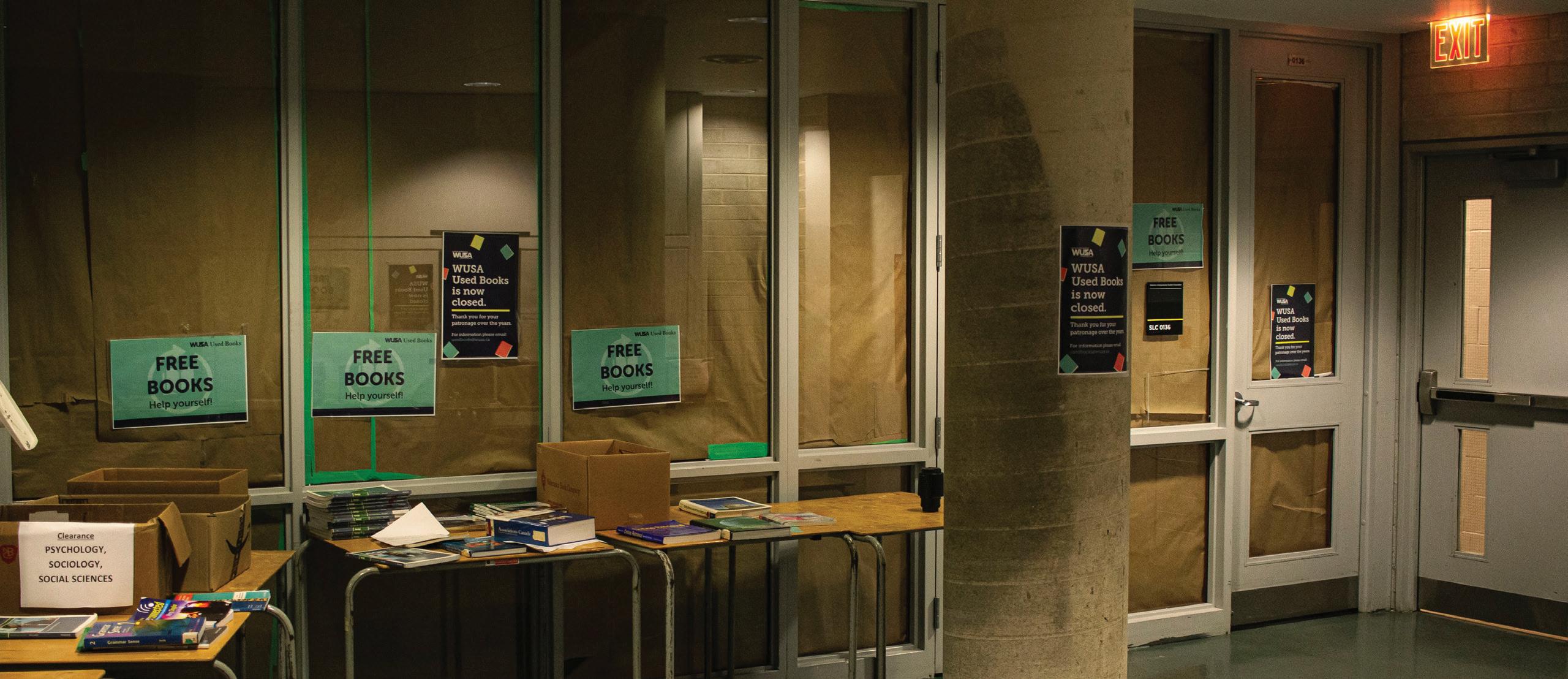
Alicia Wang, Senior Editor
It turns out the digital revolution doesn’t always have a leg up on tradition.
Several UW instructors have expressed concern at the inability to order physical books from the W Store, despite the established fact that printed books are better at facilitating detailed comprehension than e-books. Multiple incidents point to a trend in university classrooms of e-books seemingly taking a larger role in students’ education, for better or for worse.
Associate professor Aimée Morrison, who works in the English language and literature department, had her request to order physical copies of Digital Media Society by Simon Lindgren from the W Store for her class this term denied. “I looked through a bunch of books first to pick this one because I think it’s most relevant. It’s cheap. My students are going to read all of it.” The store said it would not order the physical textbooks, but that it would direct students to UW’s e-text partner.
“I wrote back and I was like… the bookstore is trying to discourage me from ordering a book?” she asked disbelievingly. Morrison, an expert in digital media and humanities, expressed that she specifically wanted a print
book because “the research is pretty clear on this, that people learn better from print materials… particularly in academic situations, and that often, people don’t realize how much they’re not learning [with an e-book].”
Various studies have demonstrated the merits of physical textbooks over digital ones, with some proving that people are better at recalling details and keeping track of the chronological order of information in physical texts due to the spatial and tactile cues they provide.
Morrison said that she was told one of the reasons the bookstore was not going to order the book was that when the book had previously been ordered by a different professor for a different class, no one had bought it.
Another reason given by the store was that the book was readily available on Amazon. “So that’s like going to McDonald’s and they’re like, ‘We’re not gonna sell you a Big Mac. But Burger King has a Whopper that I hear is quite tasty.’ Like, what?”
Morrison and the bookstore compromised to offer a link to the e-text, as well as a link to the Amazon page to order the physical book.
In response to Morrison’s tweet about the incident on X,
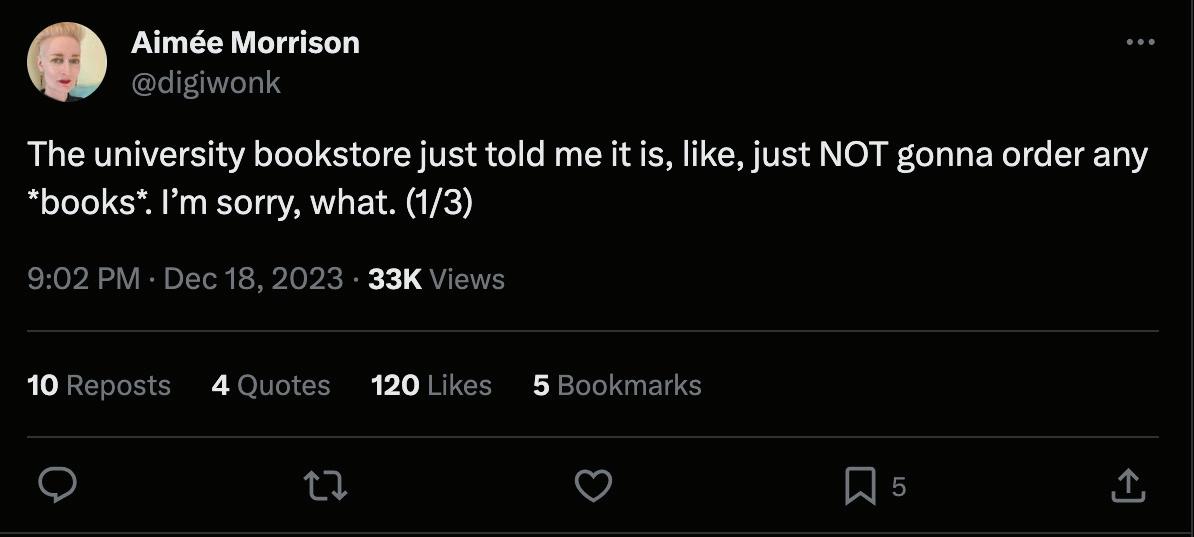
formerly known as Twitter, several instructors ranging as far as Quebec and Newfoundland and Labrador described similar experiences.
Another UW English instructor, Lara El Makui, described a similar story. By pure coincidence, El Makui attempted to order the same book from the W Store in preparation for her winter classes, but was similarly told that it would not be ordered because students weren’t purchasing it.
El Makui acknowledged that the question of digital versus physical textbooks can be a matter of preference, but that she simply wanted her students to have the option to purchase a physical copy. “For me it’s not ethical to tell students to go to Amazon when they have a bookstore that should be able to provide it for them,” she said. “I don’t think it was good enough [of] a reason for the W Store not to buy it, especially [because] more than one instructor is using this book… if we have to be in person, then surely we have to have books in person, or at least the option to have those.”
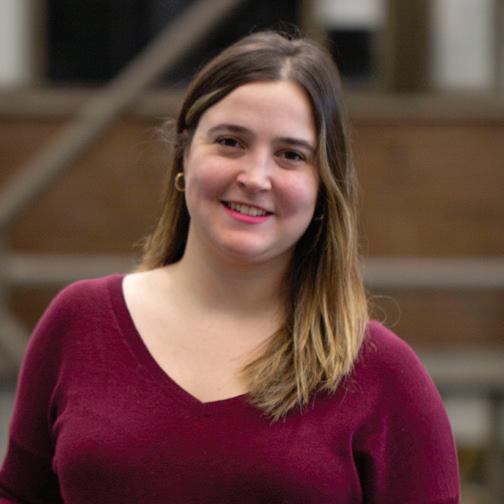
Lara El Makui, UW English instructor
For me it’s not ethical to tell students to go to Amazon when they have a bookstore that should be able to provide it for them.
“You would think that the purpose of a university bookstore is to support the academic mission of the university by having available the niche books that people are required to study, but in fact, university bookstores are budgeted differently in that they need to be self-sustaining and they often pay rent to the universities that they serve,” Morrison said. She explained that because the W Store needs to make a profit, the increasing availability of e-books means that the store is unable to afford physical textbooks since they are no longer a


guaranteed source of income.
Ryan Jacobs, director of print and retail solutions at UW, explained via email that the W Store “covers its share of space and utilities costs” in following with standard policy for all ancillary service units.
“[The W Store] determine[s] what textbooks we are able to offer for sale based on past sales history and whether a professor has made the textbook mandatory to purchase,” he wrote.
Both Morrison and El Makui had made the textbook mandatory for their class.
Morrison pointed to the profit to be found in e-books as one potential reason behind the growing trend of publishers’ preference for e-books over physical textbooks. She explained that e-books, particularly those that come with specific access codes and are only accessible for a limited amount of time, have become one way of ensuring a consistent stream of income. This way, students can’t put those codes up for sale in the used book market and thereby help other students save money on an entirely new copy.
The decline in print books is visible in the recent closure of the Used Bookstore as well as in sales from the W Store. According to SLC manager Scott Pearson, the Used Bookstore’s sales for the 2022-2023 fiscal year were less than $200,000, and during that time, the bookstore ran an operating loss of $86,440.46.
In the 2022-2023 fiscal year, the W Store sold $2.9 million in course materials, though it has experienced an average annual decline in course materials of 17 per cent over the past five years.
“And [publishers] seem increasingly to be getting out of the print book business entirely,” Morrison said, explaining that the move towards e-books is also leading to the production of multimedia e-books which can include components such as discussion questions, final exam questions, and essay concepts. Morrison referred to such texts as a “course in a can.”
“I’m a university professor. I design my courses, and what my students are paying for is for me to teach them stuff, not for me to download a bunch of PowerPoints from a publisher,” she said.
In 2014, printed textbooks made up 89 per cent of the W Store’s sales, with digital books making up just two per cent. In 2023, printed textbooks were 55 per cent of sales, and digital books made up 34 per cent.
“It just feels like everything is swirling the drain at the same time: textbooks are too expensive, people were selling them used, publishers [want] more money, bookstores need to make a profit,” Morrison said. She stated that her and her colleagues have found work-arounds in the form of ordering from local bookstores like Words Worth Books, located in Uptown Waterloo.
David Worsley, co-owner of Words Worth Books, said that about a decade ago, he experienced an influx of orders from university professors, with the store providing for about six courses for six different professors. However, things aren’t the same today.
“Textbooks, ‘I need this for eight weeks for X course,’ … I simply don’t hear as much as I did five, ten years ago,” Worsley said, explaining that he assumes students turned to e-books or used copies in an attempt to cut down on costs.
Worsley echoed Morrison’s sentiment that print books consistently win over e-books in terms of reading comprehension, and expressed confidence that e-books wouldn’t get a leg up over trade titles (the fiction and non-fiction titles sold in bookstores) any time soon.
In addition to the potential ramifications on students’ quality of education, Morrison pointed out that the impacts of an increasingly digital education aren’t limited to that sphere.
“It’s isolated us. We’re not a community of people where you might bump into people who are in your class at the bookstore, buying the same books as you from the same pile right?” she said. “This is not utopia. I don’t understand that this is better than what we did before… especially since people don’t learn as much from those materials.”
With files from Nadia Khan.
Abhiraj Lamba, Contributor
Andie Kaiser, Staff Writer

Awards season is upon us once again, and with Oscar nominations fi nally out, it’s time to make some early predictions. Though there’s still plenty of time for things to change, here are some of our initial thoughts about what might happen, as well as some of our personal picks.
Canada is still yet to receive many of the nominees in theatres, so we haven’t covered every category — keep an eye on Imprint ’s website for updated predictions once we’ve seen more of the nominees.
With the BAFTAs and Guild awards still remaining, the tide could turn this month. Await our updated predictions after the BAFTAs, Screen Actors Guild, Directors Guild of America and Producers Guild of America awards. (In a twist of fate, the Writers Guild will be having their awards ceremony after the Academy Awards, so we’re excited to go into the ceremony with one less precursor to base our predictions on.)
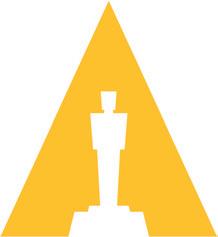
Abhiraj: Oppenheimer looks like it’s poised to take home the biggest award of the night after winning all the precursors so far, however my personal favourite, Anatomy of a Fall, could upset it. Let’s see which direction the Producers Guild decides to go on Feb. 25.
Andie: Provided Oppenheimer keeps riding the wave of success it’s been experiencing, it seems like it has the best shot at taking home Best Picture. As both an (unconventional) summer blockbuster as well as a technically astounding piece of fi lmmaking, it managed to hit the sweet spot between commercial and critical success.
Abhiraj: Christopher Nolan has been the frontrunner this award season, and I would be very surprised if there is an upset in this category. Personally, I would like to see Justine Triet or Martin Scorsese take home the Academy Award.
Andie: Christopher Nolan is the clear frontrunner here, having already won several direction awards this year, including the Golden Globe and Critics’ Choice. It would be quite exciting to see Justine Triet win, though!
Abhiraj: Historically, this has been a difficult category to predict. That changes this year. Lily Gladstone’s performance in Killers of the Flower Moon has been the best across all four acting categories by a mile, and while she hasn’t had the clean-sweep season I was hoping for, she is still arguably likely to take home the golden statuette. An unlikely but possible upset could be Emma Stone.
Andie: It’s no question that Lily Gladstone should win this award. Mollie Burkhart is truly at the heart of Killers, and Gladstone’s screen presence is simply magnetic. If Academy voters have any sense at all, she’ll be holding that Oscar on Mar. 10.
Abhiraj: This is a race that comes down to Paul Giamatti and Cillian Murphy, and I think Giammati is slightly more likely to take this one home (or to a fast-food joint).
Andie: Cillian Murphy, like Nolan, has been on quite the winning streak this awards season, so he seems like a pretty safe bet (especially considering the Academy’s love for biopics). Paul Giamatti could prove to be a strong opponent, though, having gained a lot of buzz in recent weeks. Personally, I’m rooting for Murphy.
Abhiraj: Da’Vine Joy Randolph has dominated the season and the conversation so far, so I would say it’s a fairly safe bet that she’ll take this one home.
Andie: Da’Vine Joy Randolph is the clear frontrunner in this category. She’s won numerous awards already, including the Critics’ Choice and Golden Globe, and seems to have a clear path to the Oscar.
Abhiraj: Robert Downey Jr. has been leading the season, in what has been a surprising turn of events (for me at least). A De Niro upset wouldn’t be particularly surprising though.
Andie: At this point, I would be pretty shocked if anyone other than Robert Downey Jr. wins this award. I’m just upset that Charles Melton won’t have a shot here — his performance in May December is incredible, and would’ve been my pick.
Abhiraj: Triet and Arthur Harari are taking this one home for Anatomy of a Fall. No other category is as locked in as this one.
Andie: This category could go a couple of ways, but I think (and hope) that Anatomy of a Fall will take it. If you ask me, the writing in Anatomy is simply on another level (and really, I’d give it an Oscar for the “goats” line alone).
Abhiraj: This one comes down to the two Barbie songs but I think ”What Was I Made For” will have the edge over “I’m Just Ken.”
Andie: “I’m Just Ken” certainly boasts the strongest campaign of the two Barbie songs nominated, and it seems unlikely that music from any other fi lm even has a shot here. Depending on the mood of the Academy though, “What Was I Made For” could also easily take this one.
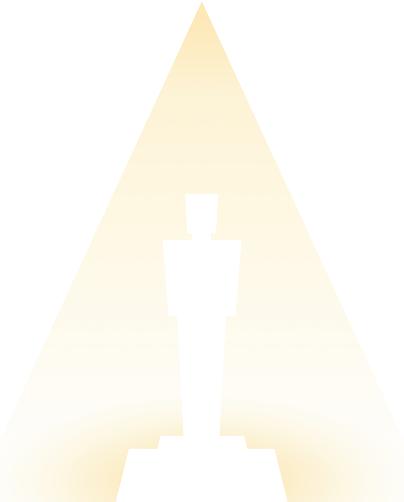
Abhiraj: A very closely contested race, which could go any which way but I think Cord Jefferson is likely to come out on top and win for his feature debut, American Fiction.
Andie: This category is a bit trickier. Barbie’s inclusion here shakes things up a bit, but it seems like an unlikely win at this point in the season. If I had to guess, I’d bet on another win for Oppenheimer, whose unique fi rst-person-perspective screenplay might give it an edge.
Both: Right now it’s looking like this will go to either Robbie Robertson (Killers of the Flower Moon) or Ludwig Göransson (Oppenheimer).
Both: By all accounts, it looks like the Oppenheimer sweep is likely to continue in this category.
Both: The Boy and the Heron seems like the obvious choice here, and for good reason.
Both: The Zone of Interest (submitted from the UK) has been receiving critical acclaim ever since its world premiere at Cannes, and looks like a pretty clear frontrunner in this category.
Both: Longtime Nolan collaborator Hoyte van Hoytema’s work in Oppenheimer has been receiving lots of acclaim throughout the awards season, so it seems likely he’ll take this one.
Both: It would be no surprise if Thelma Schoonmaker — who now holds the record for most-ever nominations in the category (this being her ninth) — wins the Oscar. It would be her fourth win in the category, a number which would also set a new all-time record.
Ingrid Au, Contributor

WhenI think of the perfect date, I think of a beautiful roast made and enjoyed with the person you love. There is something heartwarming about cooking and eating with the people you love. In that moment, there is nothing in this world but you and that person — and I hope this roast brings that feeling to you. Happy Valentine’s Day.
• 2 mixing bowls (1 large and 1 medium)
• A sheet pan
• Aluminium foil
• A pair of tongs
• Vegetables of choice (salted and peppered), e.g., string beans, brussels sprouts, broccoli, asparagus, etc.
Chicken:
• 6 chicken thighs
• 1-2 tsp of paprika/smoked paprika
• 2 tsp of onion powder
• 1 ½ tsp of honey
• 1 tbsp of oil (depending on how fatty your thighs are)
• 4 cloves of garlic (finely chopped)
• Salt
• Black pepper
Potatoes:
• Half a bag of mini potatoes (halved)
• 1 tbsp of oil
• Salt
• Black pepper
• Rosemary, thyme, and parsley (if fresh, finely chopped and 2 tsp each; if dry, 1 tsp each)
Preheat the oven to 425 F°. In a medium-sized mixing bowl, combine potatoes, herbs, oil, salt, and black pepper. Gently toss the potatoes. In a large mixing bowl, combine the chicken thighs and its seasonings. Massage the seasoning mixture into the chicken. In a sheet pan, lay out the chicken, potatoes, and vegetables of your choice separately. Make sure the chicken is spaced out, leaving enough room for the fat to melt and cook the chicken (about an inch apart). Cook the vegetables for about 20 minutes, and the potatoes and chicken for 30-40 minutes, or until the potatoes and chicken are golden brown.
Food is sentimental; the idea is that one takes the time and effort to prepare a meal for someone they love. From the mise en place to the final dish on the table, food is the greatest expression of love. Regardless of whether you have a significant other to spend Valentine’s Day with, I truly believe this is a recipe you can make for anyone special in your life, including your friends and family. Enjoy!
Indpreet Singh, Contributor
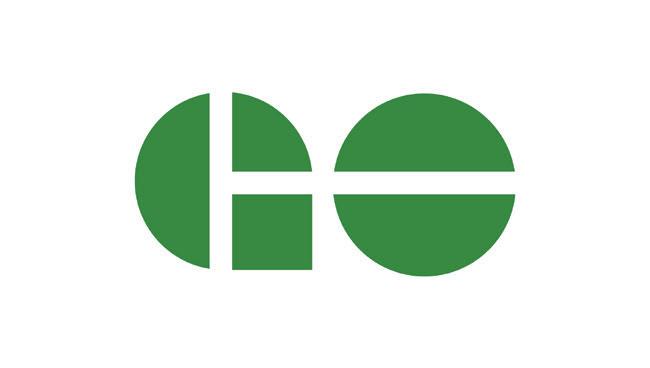
Before the COVID-19 pandemic, many UW students — including myself — opted to live on campus. This was especially true for students living more than an hour away from Waterloo, such as those from the Greater Toronto Area (GTA). Being an hour’s car ride away from home (with complicated transit options for those without access to a car), living on or near campus seemed like the only option.
But after the pandemic, many of my classes went online, so there was no need to be on campus. I simply continued classes in the comfort of my home. I officially returned to campus in person in the fall of 2022 and decided to commute because I would only be on campus twice a week.
Throughout my first year at UW, the bus route 30 from Bramalea GO to campus was almost always empty. But to my surprise, in that first week of September 2022, the bus was filled with students commuting to campus. During that first week, I spoke with a first-year student that I met at the Bramalea GO Station. While waiting for the bus, we discussed our programs, co-op, and commuting. They mentioned that they were not living on campus. I immediately responded, “You must have a decreased course load, then?” They said they did not. They were on campus five days a week with a full course load, yet chose to commute to Waterloo daily. When asked why, they explained that the cost of living away from home was too high, but they still wanted to study at UW and given the frequent transportation to the university, they decided to commute. They added that their friends were doing the same.
A handful of my friends also began commuting after the pandemic. When I asked a friend (who lived on campus her first year and began commuting post-pandemic) why she made the switch, she explained that the frequent train and buses from Bramalea GO make it possible to commute and save on housing.




A 2023 report for the Waterloo Region compiled from various data sources, including Statistics Canada, Canada Mortgage and Housing Corporation (CMHC), academic and media reports, and general conversations from within the community, indicated that the Waterloo Region grew twice as fast as the rest of Canada between 2021 and 2022 (3.8 per cent compared to 1.8 per cent). Moreover, the vacancy rate for units affordable to the bottom 20 per cent of renters in the region was zero per cent in 2022, suggesting a shortage

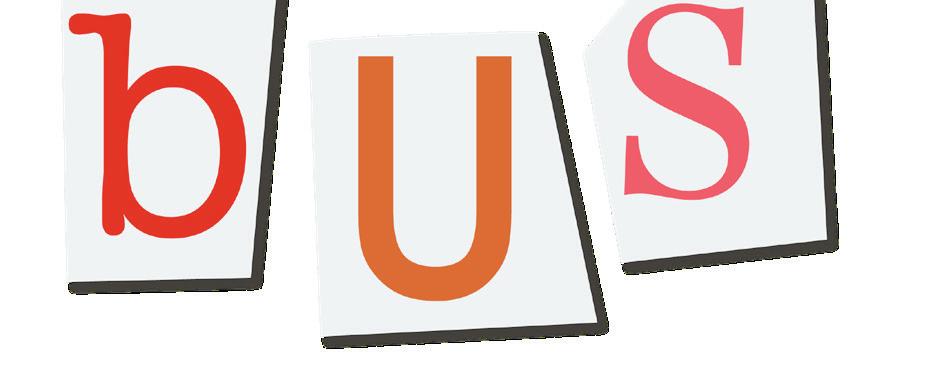



increasing the cost of living in general, which students at the university have felt the impact of. Given the increased cost of living, it seems reasonable to expect that some students may choose commuting over residing near the university.
Gurleen Kaur, who recently graduated from the accounting and financial management program, lived on and off campus throughout her undergraduate degree. Kaur was a co-op student and found it difficult to secure housing during her school terms, as she wanted to avoid dealing with the stress of subletting during the months she was away on co-op. “Finding affordable housing near the university is difficult, and living at home alleviates the many worries of renting, allowing me to focus on school rather than stressing about where to live and the increased costs of living alone,” she said. Consequently, Kaur decided to commute to school because it was less stressful and more affordable than renting.
Glen Weppler, director of campus housing at UW, shared his insights with Imprint about the increasing costs of offcampus housing in recent years and the university’s proactive measures to address the challenges faced by students seeking off-campus accommodations. Drawing on his 25 years of experience in student housing across Ontario, Weppler highlighted the increased concerns from students about off-campus housing in the summer of 2022. The complaints during that period primarily revolved around issues such as housing availability, affordability, and landlords not acting in good faith (such as breaking leases).
However, by 2023, complaints decreased significantly. Weppler talked about the pre-pandemic norm regarding housing. “Up until the pandemic, there was a normal
cycle of how students would come and go throughout the university, including students subletting and then leaving after graduation,” he said. “But the pandemic interrupted that; students were no longer on campus, so landlords had to pivot.”
He explained that landlords found alternative tenants that would not cycle out, including families or people working in the city, causing the student housing cycle to be disrupted. “In the summer of 2022, a lot of students were trying to find housing when landlords pivoted to other types of tenants. The decrease in complaints for summer 2023 is probably because the cycle started to re-establish,” Weppler said. This suggested that students were able to find housing that fit their needs again. He also highlighted UW’s efforts to support students: “The university has revamped their off-campus housing website. It has become conscious of promoting it, so students looking to live off-campus are provided with the help they need.”
Moreover, frequent lines from the GTA to Kitchener and Waterloo make getting to campus much more accessible than it once was and maintain the option of studying at UW for those who do not want to move away from home. Transit to and from UW became particularly more accessible since the beginning of 2022 with the opening of UW’s transit terminal beside E7, making it easier for students to catch buses travelling with the GRT, ION, and GO transit.
Metrolinx, a major inter-city travel service which runs the GO transit system, has continued to expand its service based on the needs of commuters post-pandemic, making it easier for people to get to Toronto, Waterloo Region, and Hamilton. There has been an increased demand for better Kitchener line service, a pattern further reflected by the insufficient flow of buses to and from the university, which causes students to be left behind.
Metrolinx and other bus providers continue adjusting their services to meet increased demand. Along with adding service options and lines , Metrolinx has made
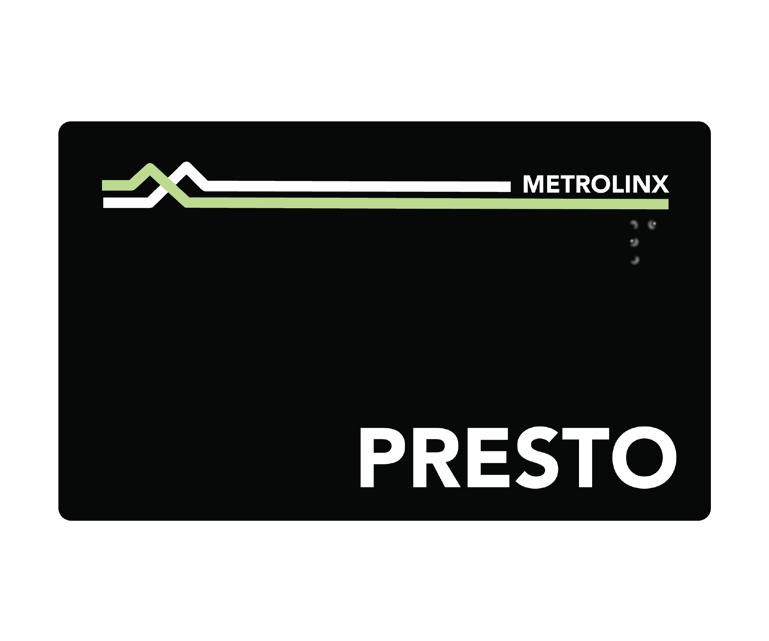

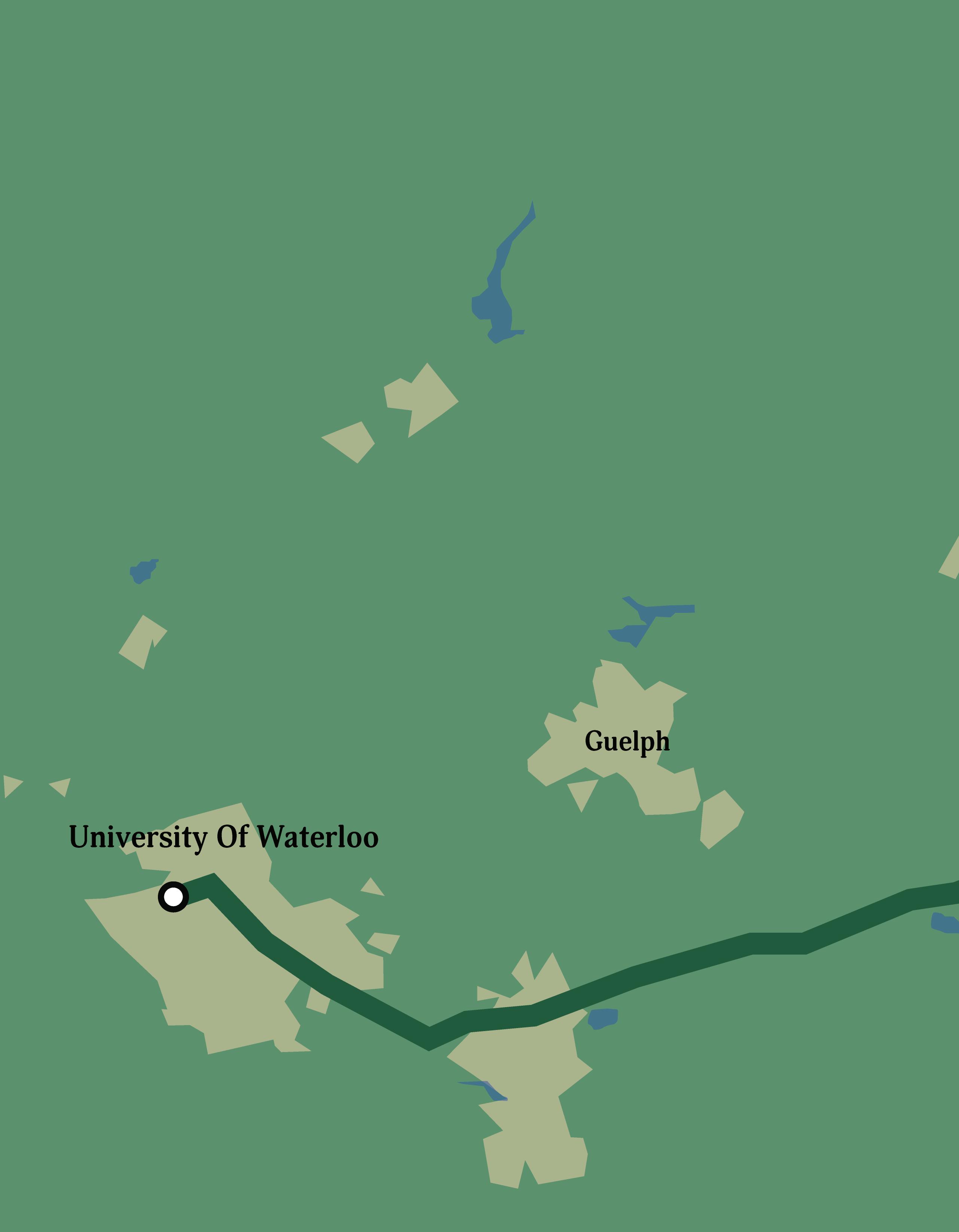

transit more cost-efficient, as full-time post-secondary students currently receive 40 per cent off a single fare when they use their PRESTO card on any GO train or bus.
According to data from Metrolinx Media, “in November 2023, ridership at Kitchener GO Station averaged 1,759 riders per day. For comparison, Bramalea GO had an average of 6,492, and Brampton GO had an average of 4,520 riders daily.” The data indicates a high demand for transit services in Brampton compared to the Kitchener GO Station. Metroxlinx also said, “Ridership has rebounded strongly in the Kitchener line market relative to other parts of the corridor. As part of our January 2024 service changes, there have also been increases to train lengths on some trips on the Kitchener line to accommodate growing ridership.” The adjustments reflect a dynamic approach to meet the changing needs of commuters, showcasing the commitment to providing efficient and responsive transportation for everyday riders.
Jonathan Chan, a UW alumnus and senior specialist on the innovations and partnerships management team at CMHC, strongly believes housing is a multifaceted challenge which demands a collaborative and comprehensive approach from all stakeholders.
Drawing from his personal experience as a former Waterloo student, he reflected on the notable shifts in housing dynamics. “When I was in school, student housing was affordable, but back then, the quality of houses was also not the greatest,” he said. While Chan recognizes the need for affordable housing, he also emphasized the importance of students living in housing that meets their needs and is safe.
“Housing requires an all-hands-on-deck approach, and [Waterloo] as a region [does] a lot of collaboration because there is a willingness to solve housing problems residents face in the city.” His insights highlight the need for continued collaboration, innovative solutions, and a collective commitment to ensuring affordable and sustainable housing remains at the forefront of the region’s development agenda.





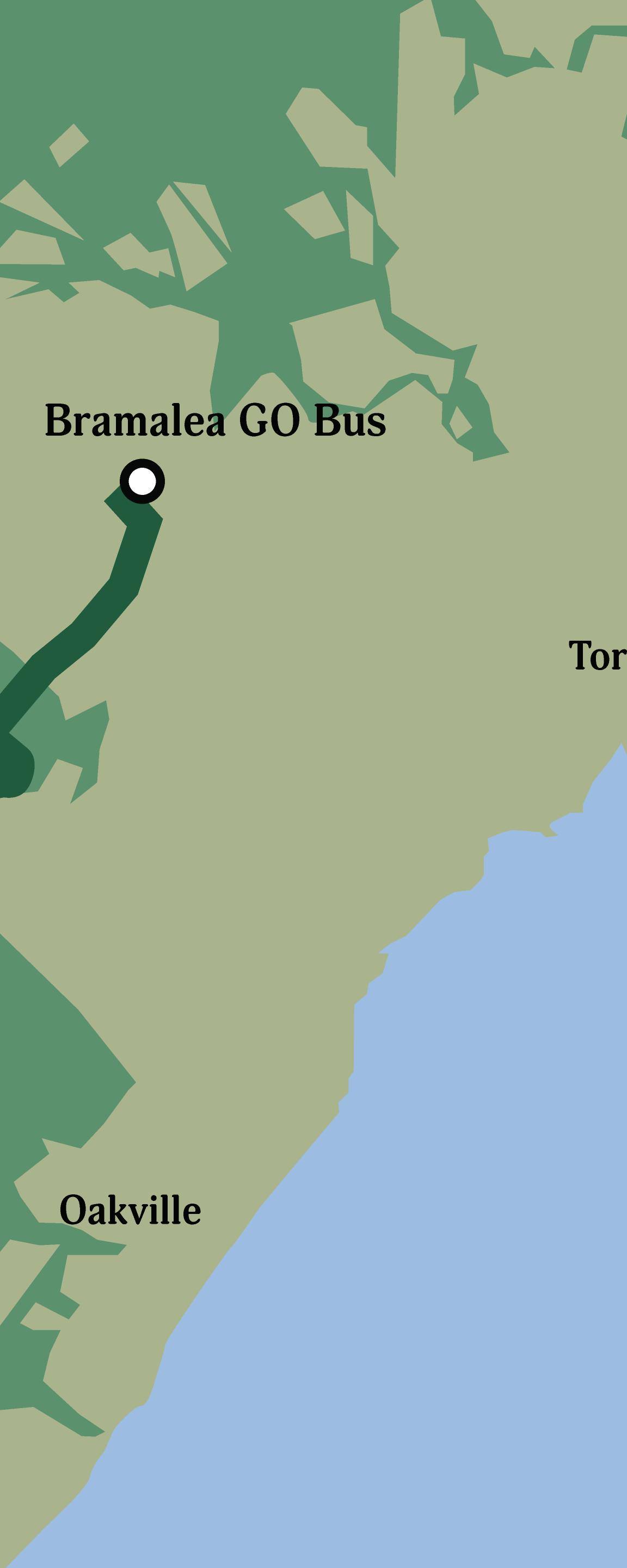

Farhan Saeed, Contributor
AsWaterloo’s housing market continues to see red, concern around Conestoga College’s rapid growth of international students continues to circulate.
Since 2014, the college’s international student growth is up 1,579 per cent, compared to UW and Wilfrid Laurier University, who have experienced a 62 per cent and 66 per cent growth respectively. Conestoga welcomed close to 30,000 new international students in 2022 alone, who now make up the majority of their student base. The college’s annual report for 2022-23 reported 42,000 full-time students enrolled across their eight campuses, meaning international students now account for around 70 per cent of the student body.
Conestoga has quadrupled its full-time students since 2012. Back then, nearly nine out of 10 of them were Canadian. This has made it one of the fastest-growing colleges in Ontario.
The college only offers 900 residential units, so students are naturally forced to find off-campus housing solutions. And strangely enough, the 900 rooms themselves are often unoccupied. An international student from Nigeria in his first year of studies at Conestoga College (who wished to remain anonymous) described his brief residence experience as “an overpriced prisoner bed.” Other reasons include the fact that many of the overseas students are generally older with prior degrees and are not looking to live in a dorm room. It is also not unusual for some of them to have families, hence the need for a larger space.
As of the fall term, the city of Waterloo published a report that the city is short around 5,000 beds for university and college students. It’s estimated that Waterloo has 39,865 beds in supply for up to 44,595 students in demand. The Nigerian international student we spoke to began his search for off-campus housing last month and said, “I never thought affordability would become secondary. Just finding a place to stay was the difficult part.”
“In my experience, it’s been two extremes,” said Spencer Chen, a fourth-year UW student. “I’ve paid very little before and had to deal with a cramped room with no light switch, but on the other hand, I’ve paid absurd prices to live with strangers in a poorly managed building. I want to find a middle ground.”
Chen has played both sides of the rental game, as he subleased his room when he was away for a co-op term.
“My experience with receiving payments had always been complicated,” he shrugged. He explained how he struggled with receiving rent on time and once even lost his tenant mid-way into the term.
As the city’s vacancy rates continue to cruise at record lows, Kitchener-Waterloo ranked as the 13th most expensive place to rent in Canada as of January 2024, at an average of $2,359 for a two-bed unit. Purpose-built rental apartments across the nation experienced the fastest growth in 2023, posting a 12.8 per cent increase.
“I’ve been hearing about five-bedroom units being taken up by 8-10 people,” said James Craig, a realtor and member of the Waterloo Region Association of Realtors (WRAR), who works closely with student rentals. “As housing prices
As housing prices rise, food security also becomes a growing issue. The two matters go hand in hand.
James Craig,
Realtor and member of the Waterloo Region Association of Realtors (WRAR)
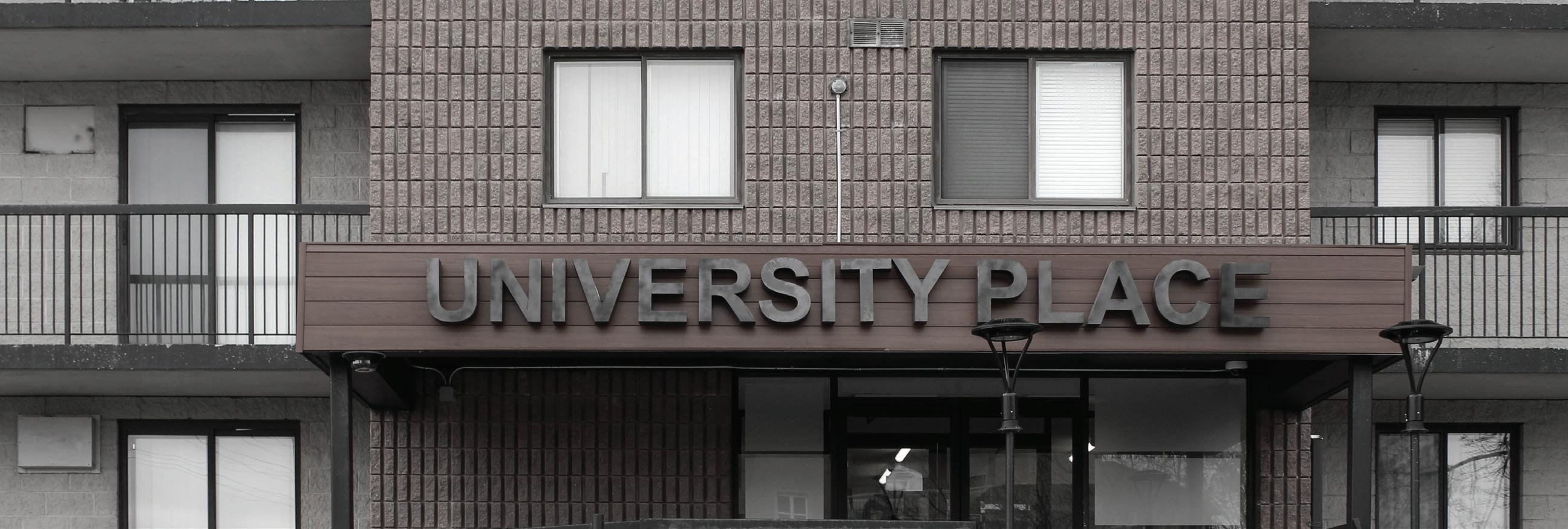
rise, food security also becomes a growing issue. The two matters go hand in hand.”
The affordability issue isn’t limited to housing; the Food Bank of Waterloo Region recorded a 220 per cent increase in food assistance for students compared to last year. While the food bank does not distinguish between international and domestic students, anecdotal evidence has pointed to a rise in international students requiring assistance. Usage of the WUSA food bank has also increased by 300 per cent this year.
International students are required to show the government a minimum bank balance before arriving, but according to Cambridge Today, have reportedly been getting loans to meet the requirement, then quickly paying them off before coming to Canada. The result is a large group of international students working multiple jobs to afford tuition and living — a very difficult task to do on minimum wage, hence the increased need of the food bank.
In just a decade, the international student presence at Conestoga College rose from 10 per cent to 70 per cent — a statistic that has UW students on online forums criticizing the college. It’s no secret that international tuition is significantly more expensive. Conestoga brought in an additional $109 million in tuition fees since the previous fiscal year, while UW experienced a $10 million increase.
On Jan. 22, the federal government announced a plan to limit the number of international student permits authorized in Canada throughout 2024, as immigration minister Marc Miller called the 2023 volume “disconcerting.” A two-year cap will be imposed, slashing the number of student visas issued by 35 per cent with aims to target institutional “bad actors.” Universities across the country have responded negatively, claiming that the move could be damaging to not only schools’ financial situations, but also Canada’s image as a study destination.
“Buses have definitely become more crowded over the years,” said Rashid Haque, a fourth-year student at UW.
“Especially around the Conestoga area… I think it’s great that our community continues to become more diverse, but the institutions that welcome this many students should be held accountable when it comes to a lack of infrastructure.”
There is some hope for the housing supply as more units are built. “There is a healthy pipeline of projects on the way,” assured Craig. “As hope rises for lower interest rates, we can expect more inventory in the market.”
With files from Humreet Sandhu.

Zoe Cushman, Contributor
1 High-end camera
5 Spot on a bus
9 Bleated
14 Ostrich relative
15 ___Vista (obsolete search engine)
16 ___ key (tool used for assembling IKEA furniture)
17 Protective trench 18 Federal-level (abbreviated)
19 Bags
20 American ship that is over 200 years old
23 Anti-harassment hashtag
24 ...---...
25 Navigational aid
28 Artist Janelle
30 Mornings (abbreviated)
31 Disgusting
32 Hindu drink of the gods
34 Country estate
35 Love-themed February holiday
38 Funnel-shaped
39 White terrier, affectionately
40 What peaches and cherries have
41 .zip alternative
42 Ancient Greek marketplace
45 Bottom surgery (abbreviated)
46 Counterpart of bro
47 Pink-haired companion in the older Baldur’s Gate games
49 Legal weed supplier (two words)
53 Festive activities on 35-Across
56 ‘Behind’ in Spanish
57 Cell body of a neuron
58 Wear away
59 Husband, in French
60 To love, in Spanish
61 WUSA’s peer support program
62 Concludes
63 Women’s fashion brand advertising their sustainability DOWN 1

2 Aleichem who created ‘Fiddler on the Roof’
3 Result in (two words)
4 Justifications
5 “In Corpore ___” (Serbian Eurovision 2022 song)
6 Panache
7 Lawyers (abbreviated)
8 Magical trinkets
9 Four of diamonds?
10 Most-used entry in my Imprint crosswords so far
11 Abbreviation on a wine bottle
12 ‘Yikes!’
13 The ‘phonebook of the internet’
21 Explored
22 Less popular follow-up to card game UNO
25 AI research institute based in Quebec
26 Someone you can count on
27 Green legume
29 Sea eagle
30 Second-best ranking
31 Plagiarism and You(Tube) by hbomberguy, for example
33 “I’m innocent!” (three words)
34 Hand symbols meaning ‘two’ or ‘peace’
35 To see, in French
36 Insects that can carry objects much heavier than them
37 When you’ll be there (abbreviated)
38 Who you call when a kid is in danger (abbreviated)
41 Counterpart of Len
43 Give away, as a pet
44 Scents
46 Conveniences sent by wedding planners or freelancers (abbreviated)
48 What many long-distance couples are on 35-Across :(
49 Give up
50 Isles off the Irish coast
51 Performer D&D class
52 Egyptian goddess of healing and magic
53 One side of the USA’s two-party system (abbreviated)
54 Altar constellation
55 Little guy
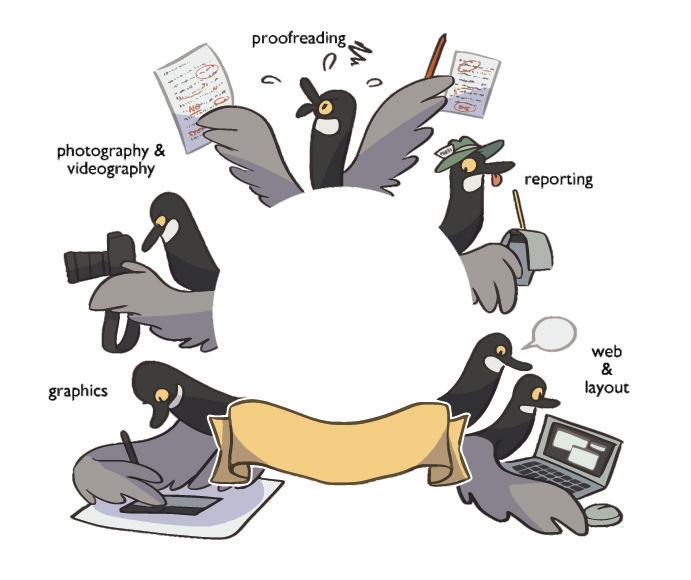




Thursday, March 21

Learn more @ wusa.ca/events


















